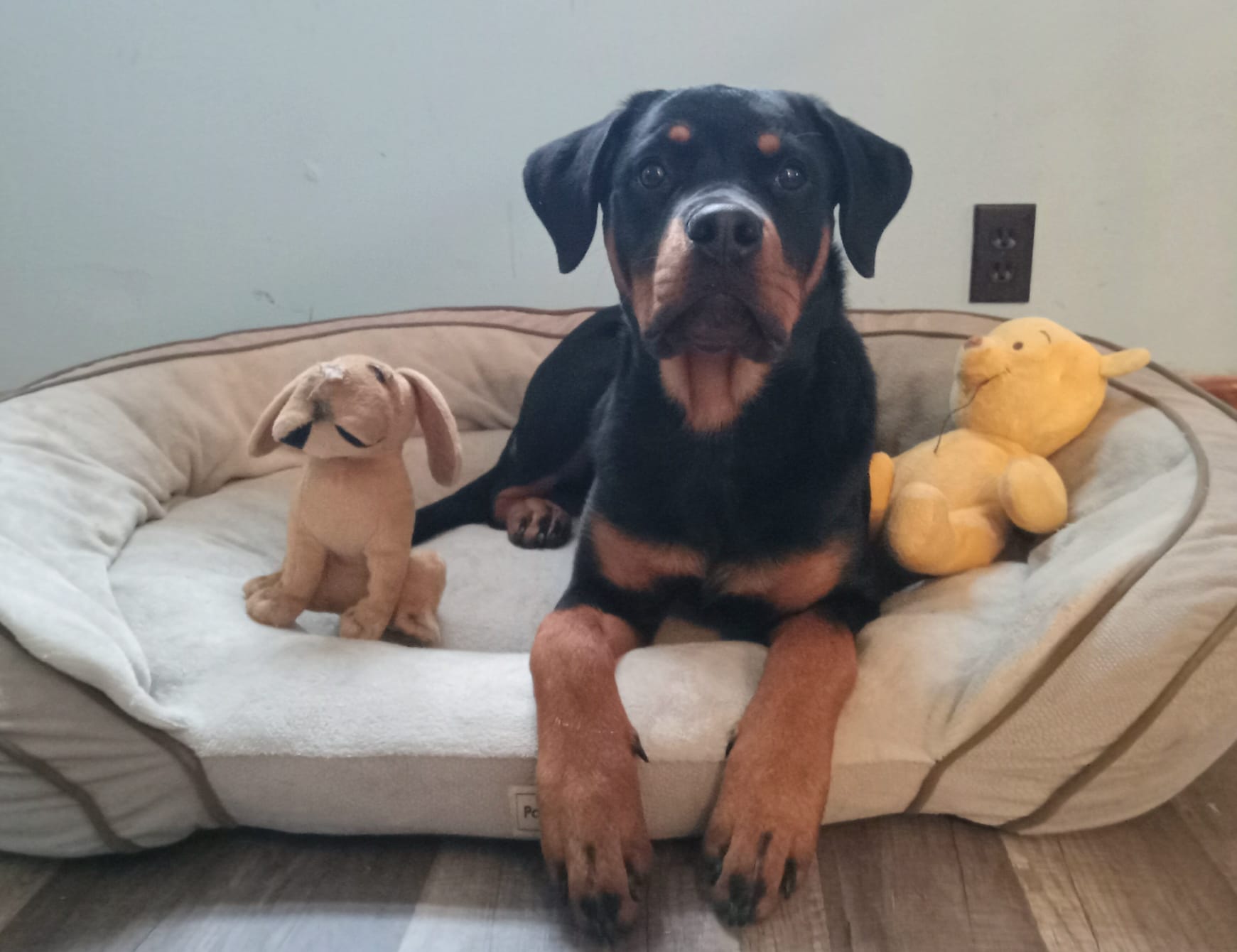Surviving Nipping and Biting Puppies
2023-02-07

A puppy explores the world around them with their mouths. Unfortunately for humans, those sharp teeth hurt! In order to teach our puppy that nipping and mouthing is inappropriate we have to be very consistent in not allowing our hands to become chew toys. We should not encourage rough play, or games like slap boxing. The first step is to make sure your puppy has sufficient mental and physical stimulation. Going for long walks, obedience, trick training, treat dispensing toys, food puzzles of varying degrees of difficulty, and games like fetch or tug should all be used to help tire out your dog. Additionally, there are also a few exercises you can practice while you play with your puppy.
Apply the '5-Second Rule' to Petting: When working with a dog who regularly engages in nipping and mouthing, count to 5 seconds when you pet them. If the puppy shows any sign of discomfort or is not calm and relaxed, you should immediately stop petting them. Once your dog can remain relaxed and not get over aroused for those 5 seconds, stop petting. If they respond by giving you eye contact, pawing or nuzzling your hand or doing anything other than mouthing your hand, they are politely asking you to keep going. Continue petting the dog for another 5 seconds and repeat the exercise.
Teach an Alternate Behavior:
- Begin by putting about 10 pea-sized treats in the hand opposite from the one that you use to pet the puppy.
- Sit on a chair near the puppy.
- Then reach over and pet him one time.
- Before the puppy begins to nip, immediately present your baited hand (the hand with the treats in it) to the puppy and food lure his attention away from the hand you just petted him with.
- As the puppy is turning his head away from the petting hand to follow the baited hand, click and reward with a treat.
- It will not take long for the puppy to begin responding to being petted by looking at the hand that is not petting him. Once he does, reward him with a treat or a toy.
- Gradually increase the amount of time you spend petting the puppy before offering a treat or toy.
This exercise teaches the puppy an alternative response to being pet. Most puppies will find being pet as a rewarding experience however, not all dogs enjoy being pet. This exercise can teach a dog to tolerate being pet and possibly learn to enjoy the tactile as a reinforcer.
Redirection: You should only pet a nippy puppy when they are calm, tired, or preoccupied with a chew toy. By only petting the puppy when they are least likely to nip or mouth, you have the chance to reward the absence of the nipping behavior. A puppy who is already chewing on a satisfying object is much less likely to nip or mouth. With a puppy's short attention span they will typically get tired of one toy rather quickly and go right back for your hands or feet so remember to greet your puppy with more than one toy available especially during playtime. If at any time should your puppy begin to nip at your hands or feet, you should immediately give your No Reward Marker and remove your attention. If they are persistent, remove yourself from the area or room entirely for about 30 seconds or until they calm down.
Inappropriate Chewing: Puppy proofing is a must! Remove any inappropriate objects that your puppy can access. If you are unable to watch your pet very closely, they should be confined in an exercise pen or crate so they cannot sneak off and chew up something they shouldn't have. Make sure you also have plenty of toys available so your puppy can occupy themselves. If at any time you catch your puppy chewing on an appropriate toy, make sure it doesn't go unnoticed.Give them calm praise or petting but try not to distract them from their toy. You can also put your puppy's toys in rotation so they won't get bored from the toys they have at their disposal every single day. Treat dispensing toys and stuffed Kong’s will also keep your puppy's attention for a longer amounts of time and help stimulate them mentally. If you happen to catch your puppy chewing on something inappropriate, immediately give your no reward marker and replace the inappropriate object with something your pet is allowed to have. It can often be helpful to replace the inappropriate object with something of a similar texture. If it is something that the puppy routinely chews that you cannot move such as the baseboard or a table leg, consider using a chew deterrent like Bitter Apple Spray, Chew Guard or cayenne pepper.
Teething: Most puppies just want to chew on something to make their gums feel better. There are many chew toys on the market that are made for teething which are rubbery and soft. You can also soak a rope toy in cold water which can help alleviate some of the pain.
Ready for Dog Training?
Tell Us About Yourself
Tell Us About Your Dog
Find Out How We Can Help
We know your dog is unique. Before making any recommendations, we need to evaluate your dog's needs.
Connect with a team member for more information